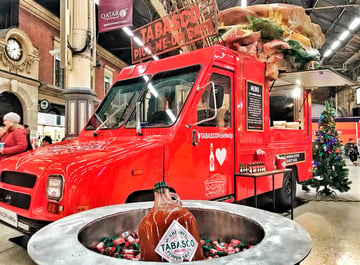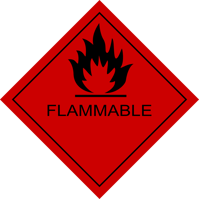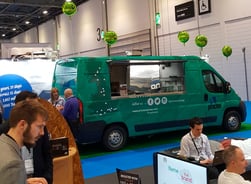Your promotional vehicle must comply with a venue's health and safety regulations. After all, no one wants something going awry and people getting hurt! And at Promohire, we think it's always worth knowing the rules well in advance.
In this article, we cover the main H&S requirements you're likely to encounter. This will help you plan ahead, so whether you choose our team or not, you'll be better informed for your next campaign.
Why learn about health and safety?
Health and safety checks will be carried out by your promotional vehicle supplier, but in order for that to happen you have to be able to tell us what they are, and that’s a lot easier when you know a bit about them yourself.
Failure to understand can lead to a failure to adequately communicate, which in turn can result in a non-compliant vehicle. This will mean we have to retrofit your vehicle last minute, which can cost over £2000.
It can also delay your start date, as you may be denied access to the venue, wasting all the money you paid for your premium spot.
Feeding correct health and safety information back to us means we can design a suitable setup from the beginning, allowing your activation to run smoothly from beginning to end.
Common H&S requirements
Venues have a variety of health and safety concerns including RAMS, PAT, and even parking stipulations. So, let's get into it...
RAMS
RAMS or Risk Assessment Method Statements, are how site owners know you'll comply with their rules. They identify the steps taken to minimise hazards or risk.
This is something we take care of for you, completing RAMS when and where necessary as part of our logistical services. However, we do need to know what regulations are in place so that we can comply with them in our RAMS documents.
PAT
PAT or Portable Appliance Testing, is carried out to ensure that all electrical equipment classified as “portable” is deemed safe for use. This is particularly important for catering or barista setups, which use multiple appliances.
Power
Power regulations vary, so it’s important to ask the same power questions for each one.
You need to find out what forms of power they allow, how much you can use, and if they only allow you to use their own supply.
Generators might be allowed at one venue but banned at another due to noise regulations. For the same reason, gas might be banned at an indoor venue if it can’t be safely ventilated.
You'll typically be safe with greener forms of power such as lithium batteries and solar panels, but always ask, as it never hurts to cover the bases. You could be asked to store batteries in a waterproof container filled with sand, for example.
Fire
 Fire safety is important to all venues, but requirements vary. All vehicles are generally required to carry a fire extinguisher suited to the kind of fire that may break out.
Fire safety is important to all venues, but requirements vary. All vehicles are generally required to carry a fire extinguisher suited to the kind of fire that may break out.
Fire extinguishers should be in date and carry a service label, with a service certificate from a BAFE qualified individual, available on demand.
Some venues may require a 0 fire rating, meaning in the event of a fire your vehicle and materials cannot combust in under 20 minutes. To minimise risk of combustion, some venues ask you to drain fuel tanks after parking and lay drip trays to catch leaks.
Gas
The use of gas may be restricted or banned due to the risk of insufficient ventilation. In many venues, gas cookers need a proper hood and extraction fan.
These rules apply both in and outside a vehicle, so you can’t just set up a griddle or a wok on a trestle table and start cooking.
Gas cannisters and appliances should have an adequate safety record that can be inspected if required. Cannisters must be stored in a ventilated box internally – with access only possible from the outside, or an external cage that's well-ventilated.
Parking
Even parking can be tightly regulated at venues, and you may be required to use a banksman.
A banksman oversees the process of moving a vehicle into its allotted position, removing the risk of damage or harm.
Get venue help with Promohire
When you're running a promotional campaign, we can make your life as easy as possible - and that extends to health and safety compliance.
We can source locations based on your brief and the vehicle you've booked (and we recommend booking early!).
So, why do it yourself? See our location services to learn more about how Promohire can take the stress out of the booking and compliance process.




